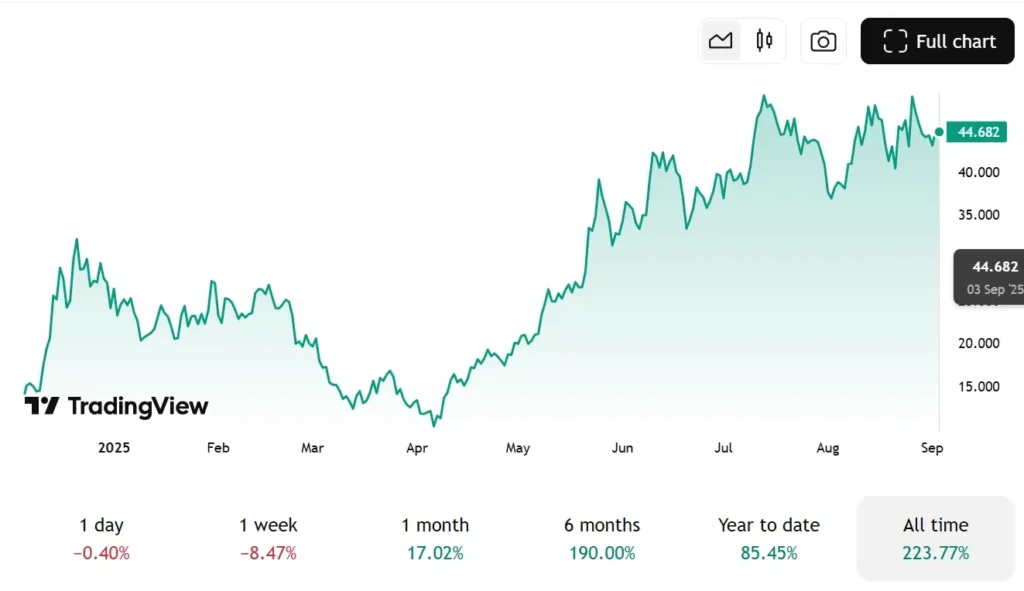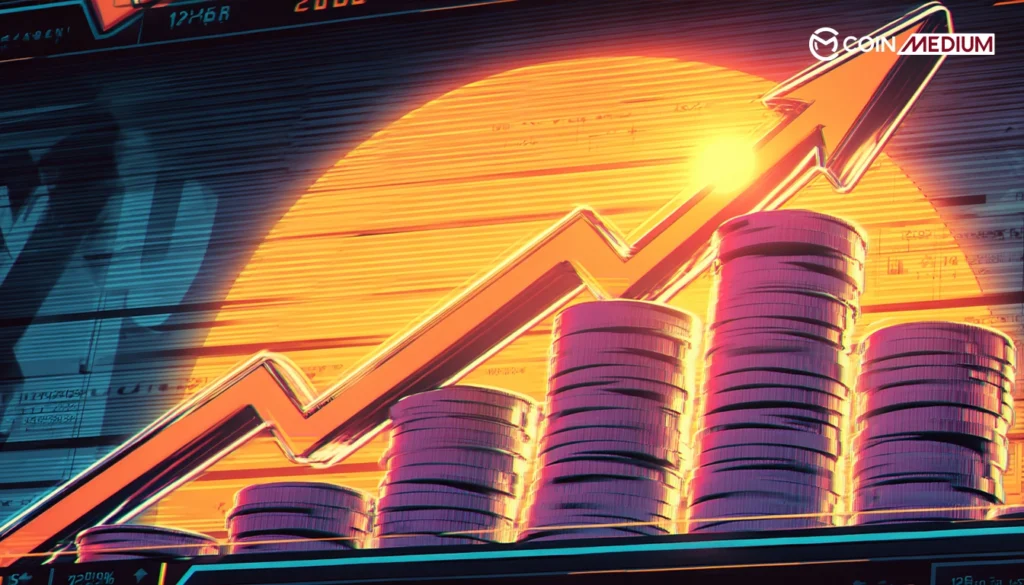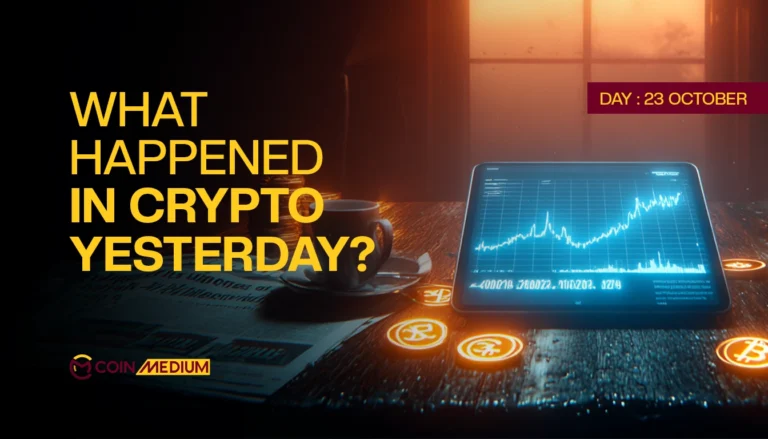Hyperliquid, a decentralized futures exchange, just achieved what most financial institutions can only dream of. In August alone, this team of meagre 11 employees generated $106 million in revenue, crushing their previous record and leaving Wall Street giants scratching their heads. The August revenue marked a 23% increase from July 2025’s revenue of $86.6 million.
The numbers tell an incredible story. While PayPal employs approximately 29,000 people to process an estimated $1.6 trillion annually, and Visa relies on about 28,800 workers to handle roughly $12–$13 trillion in annual payment volume, Hyperliquid processes an estimated $1.167–$1.267 trillion annually with just 11 team members.
The platform dominates the decentralized perpetuals market with a commanding 70% market share, processing $383 billion in monthly trading volume. Even more impressive, it has outpaced Robinhood, a leading trading platform, in trading volume for three consecutive months.

The Secret Weapon: HyperEVM Technology
Hyperliquid’s competitive edge lies in its custom-built HyperEVM blockchain. This technical breakthrough eliminates gas fees for trades while maintaining complete on-chain transparency, thereby solving the biggest pain points that drive traders away from traditional DeFi platforms.
The platform combines the lightning-fast performance of centralized exchanges with the security and transparency benefits of decentralized systems. During peak volatility periods, the exchange handled $29 billion in 24-hour volume, generating $7.7 million in daily fees.
Smart contracts and automation streamline Hyperliquid’s operations, handling settlement, reconciliation, and compliance with minimal staffing. This lean model has driven significant growth, scaling the platform’s total value locked (TVL) to hundreds of millions since April 2025.
Arthur Hayes’ Bold 126x Prediction
Arthur Hayes, former BitMEX CEO and Maelstrom’s CIO, predicts a 126x surge for Hyperliquid’s token by 2028, driven by the platform’s potential to dominate the decentralized derivatives market. According to him, Hyperliquid could rival Binance’s $70–90 billion daily trading volume. Its growth is fueled by a projected $10–34 trillion stablecoin market, spurred by regulatory support and rising demand for efficient, low-cost DeFi trading solutions. Hyperliquid’s high-throughput infrastructure and focus on derivatives position it to capture significant market share as trust in centralized exchanges wanes and stablecoin adoption soars.
Hyperliquid’s HYPE token, trading at $44.34 with a $14.8 billion market cap, sits just 12.2% below its $50.99 peak. Strategic partnerships with Anchorage Digital and Circle’s USDC integration fuel rapid institutional adoption, while 21Shares’ HYPE ETP on SIX Swiss Exchange bridges DeFi with traditional finance. Processing $8 billion daily, Hyperliquid blends institutional-grade volume with DeFi’s transparency, showcasing that agile innovation outshines bloated systems, paving the way for a decentralized financial revolution.
Indeed, Hyperliquid is proving that sometimes smaller really is better. It is combining agility, innovation, and trust to redefine the future of finance. As it continues to break barriers between decentralized and traditional markets, Hyperliquid is not just riding the wave of change but reshaping the currents of the financial revolution.








